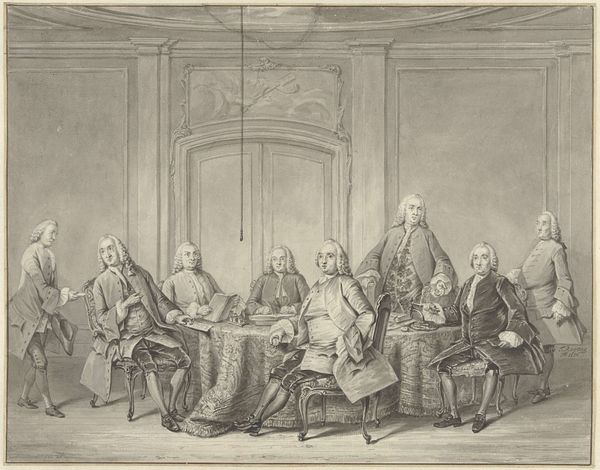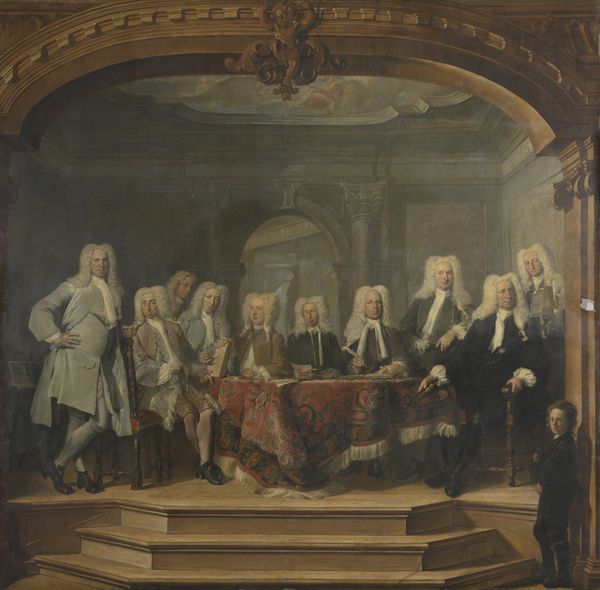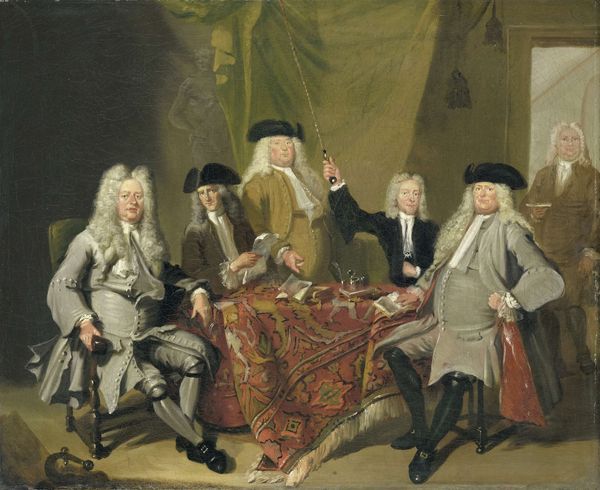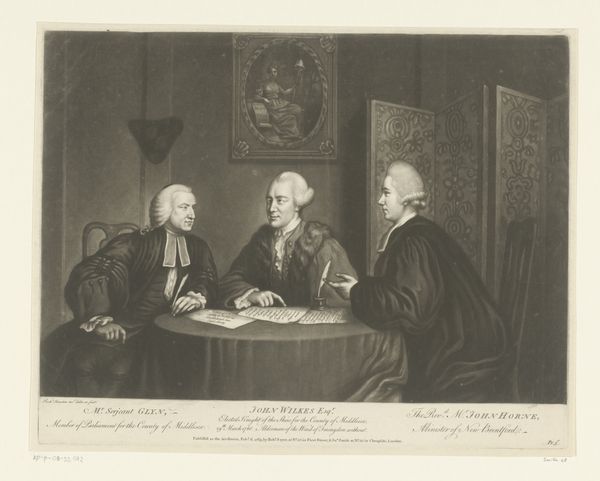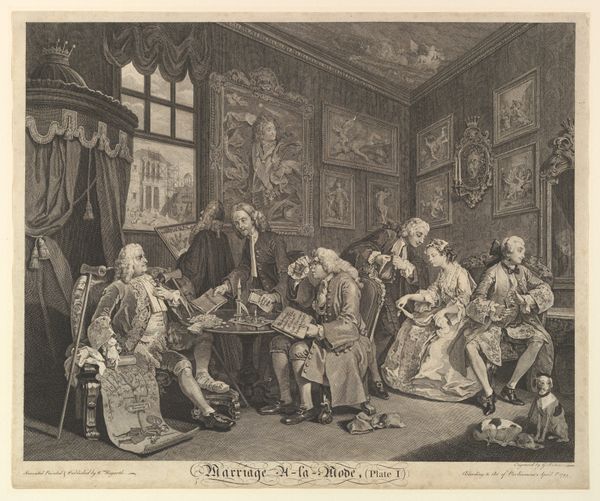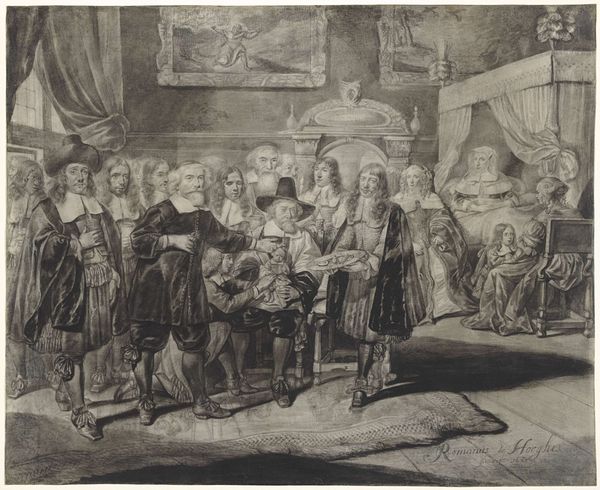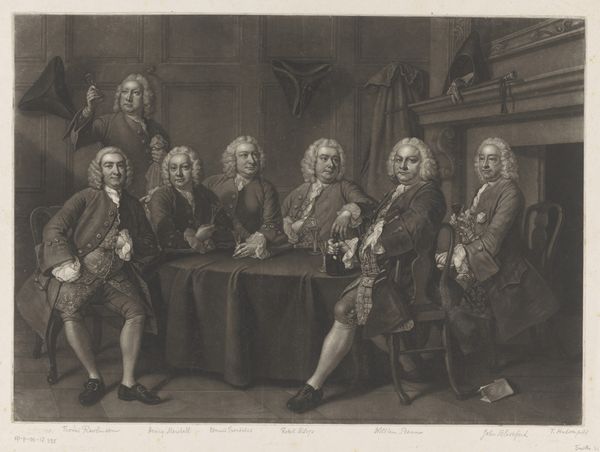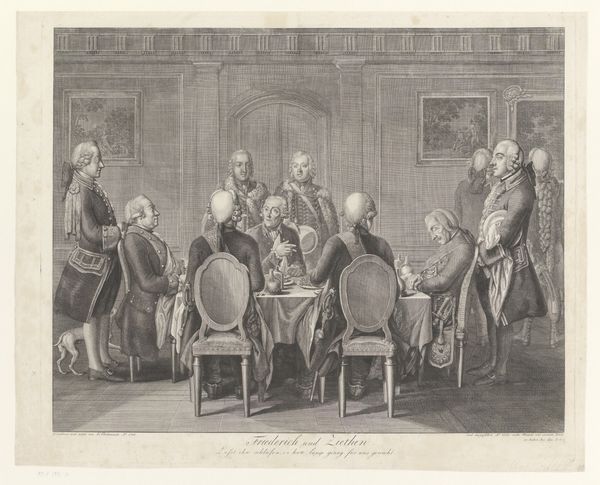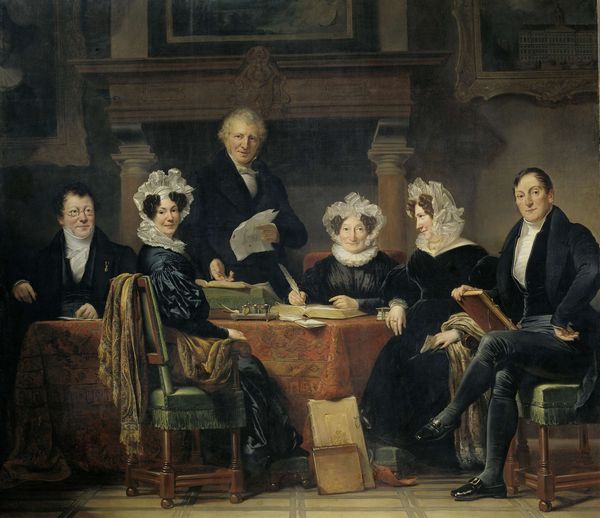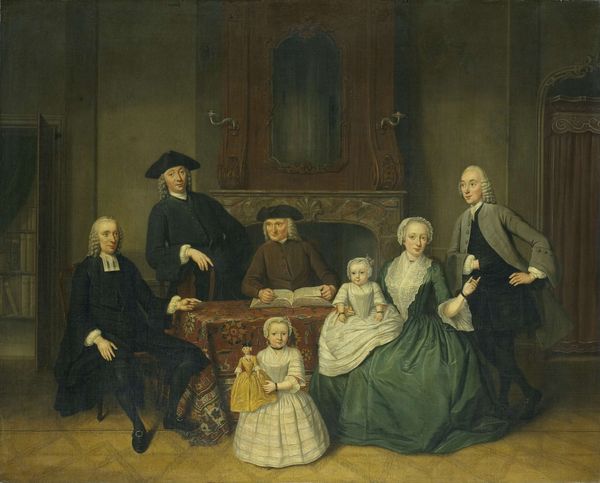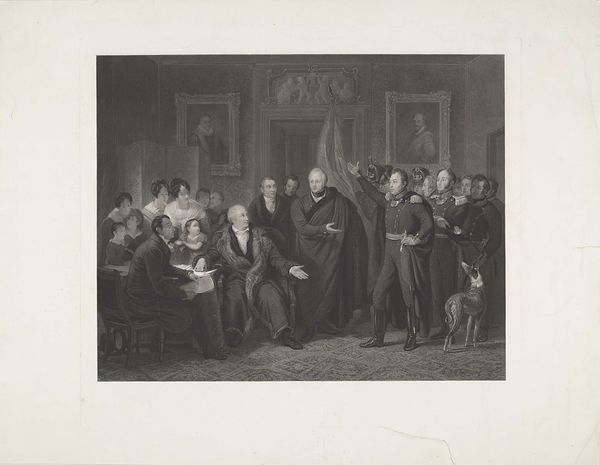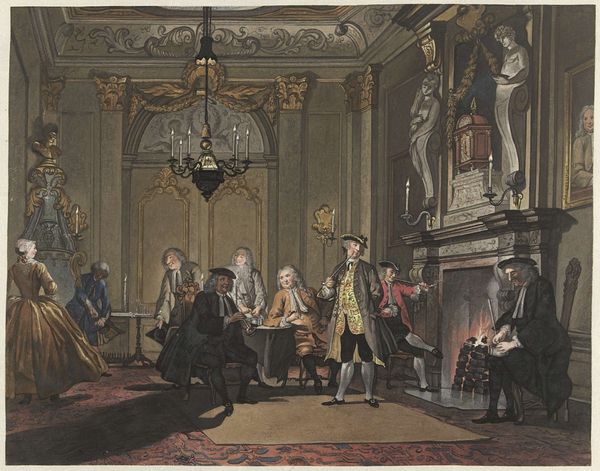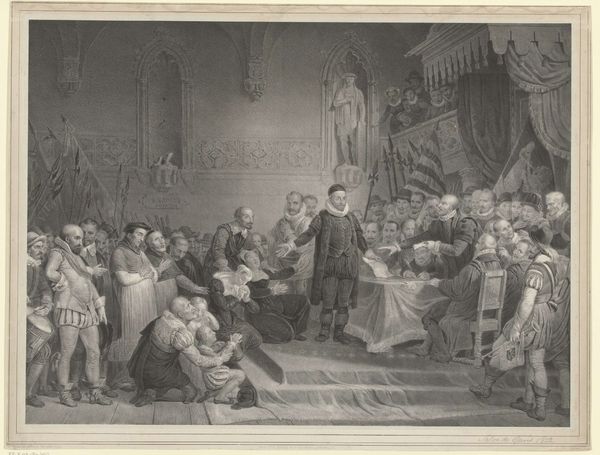
Dimensions: height 378 mm, width 425 mm
Copyright: Rijks Museum: Open Domain
Editor: Here we have Jan Bulthuis's "Regentenstuk," made in 1789 and currently residing in the Rijksmuseum. The painting depicts a group of men around a table. What I find striking is how seemingly ordinary they appear; what stands out to you in this piece? Curator: I see an image meticulously constructed, ostensibly portraying civic leaders, but deeply rooted in material culture. Observe the table; what kind of labor do you think went into it? Its intricate pattern on its tablecloth isn't just decoration; it’s indicative of specific textile industries, trade routes, perhaps even exploited labor. What social structures are suggested through the visual elements that surround them? Editor: So, the ornate textile acts almost as a symbol, representing broader economic realities? Curator: Precisely! And look closer at what these regents are *doing.* They aren't just existing; they're holding papers, touching books – symbols of governance, trade, and perhaps domination over others. It’s essential to consider *who* these men are and *how* their wealth and status were acquired. What impact did their consumption have on global communities and economies? Editor: That puts it in a new perspective. The act of commissioning the portrait becomes a material statement in itself. Curator: Indeed! A portrait of this nature isn't merely about likeness, it reflects networks of economic power, privilege, and material consumption. Editor: I hadn't considered the labor embedded in even something that appears purely representational like this. I'm now seeing this in terms of trade, global impact, and the economics of that era. Curator: Exactly. By analyzing what these figures materially *consume,* and *produce*, we reveal the dynamics and power relations underlying society at that time.
Comments
No comments
Be the first to comment and join the conversation on the ultimate creative platform.
